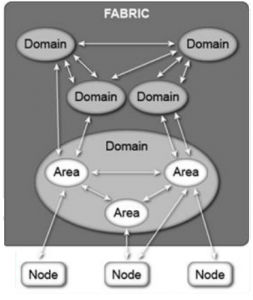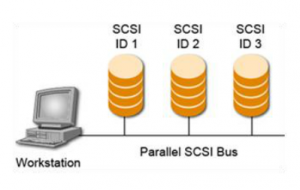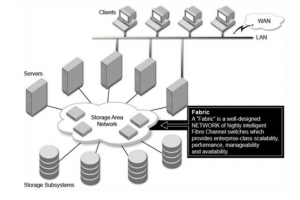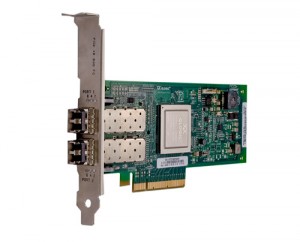What is Fabric?
Fabric can be explained as a number of switching elements connected together. As I mentioned in part 1 Fabric can be just one switch, or bunch of interconnected switches (domains). One Fibre Channel Switch = one Fabric Domain.
Addressing
All devices in Fibre Channel network have an identity.
Worldwide name (WWN)
All FC devices have a unique identity that is called a worldwide name (WWN). This identification can be compared with Ethernet cards and MAC addresses. Each Node Port has its own WWN, but it is also possible for a device with more than one Fibre Channel adapted to have its own WWN as well. WWN is 64-bit address, and if two WWN addresses are put into the frame header, this leave 16 bytes of data just for identyfying the destination and source address. So 64-bit addresses can affect routing performance. Each device in the SAN is identified by a unique WWN. The WWN contains vendor identifier field, which is defined and maintened by the IEEE.
There are two WWN addressing scheme, old one starts with 10:00 followed by company ID and vendor specific info. New scheme start with hex 5 or 6 in the first half-byte followed by the vendor intenfier in the next 3 bytes:
Vendor ID and company ID are assigned by the IEEE standards, and can be found here:
http://standards.ieee.org/develop/regauth/oui/oui.txt
WWNN vs WWPN
A worldwide node name (WWNN) is a globally unique 64-bit identifier that is assigned to each Fibre Channel node or device. For servers and hosts, WWNN is unique for each HBA (host bus adapter), and in a case of a server with two HBAs, they have two WWNNs. For a SAN switch, the WWNN is a common for the chassis. For storage, the WWNN is common for each controller unit of midrage storage. In case of high-end enterprise storage, the WWNN is unique for the entire array.
A worldwide port number (WWPN) is unique identifier for each FC port of any Fibre Channel device. For server, we have a WWPN for each port of the HBA. For a SAN switch, the WWPN is available for each port in the chassis. For Storage, each host port has an individual WWPN.
Port address
Additionally to WWNs there is another addressing scheme that is used in Fibre Channel networks. This scheme is used to address ports in the switched fabric. Each port in the switched fabric has its own unique 24-bit address.
Those 24-bit addressess are used strictly for routing processes. It contains Domain ID, Area ID and Node ID.
- Domain
This byte is the address of the switch itself. A domain ID is a unique number that identifies the switch or director to a fabric. One byte allows up to 256 possible addresses. Because some of these addresses are reserved, as for the one for broadcast, there are only 239 addresses available. This number means that you can theoretically have as many as 239 switches in your SAN environment.
- Area
The area field provides 256 addresses. This part of the address is used to identify the individual ports. Hence, to have more than 256 ports in one switch in a director class of switches, you must follow the shared area addressing.
- Port / Node
The final part of the address provides 256 addresses for identifying attached N_Ports and NL_Ports.





